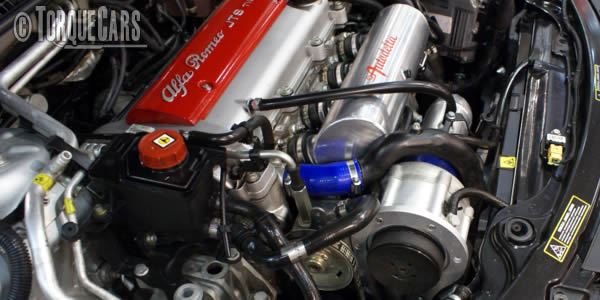What does stage 1, 2 and 3 tuning mean?
"Staggering gains from stages of tune"
Tuning companies and car modifies will often talk about a stage 1, 2 or 3 mods.
What exactly is meant by this? Do the stages actually mean something?

Sorry but TorqueCars will now shatter the illusion for you. They are, pretty much meaningless terms when applied to power gains and cannot reliably be used to explain how much power a modification adds or what it is.
There is no consistent difference or definition in part makers between their classifications of stage 1 stage 2 and stage 3 mods.
You might just as well say phase 1,2 & 3 it will mean as much but there is a common understanding between them.
They will differentiate between a "typical" mod in each stage and highlight the complexity, cost and power gain return you'll expect.
What is a typical stage 1 modification.
A stage 1 mod can usually be added on it's own with no other supporting parts needed or required. A true stage 1 modification part does not require any other engine modifications to get it to work properly other than perhaps some mounting bolts or clips. Other mods will help to realease the full potential of the mod they are not required. These are at the bottom end of the tuning scene in terms of the overall benefits you will get. they cost less and are generally easy to carry out.
Stage 1 mods are generally a relatively simple DIY fit if you are competent and should work well on a standard engine that is in good condition.
Examples of stage 1 modifications include:
- induction kits
- fuel pressure regulators
- a simple engine remap or timing changes
- panel air filters
- sports exhausts
- blow off valves/divertors.
What is a typical stage 2 modification?
Stage 2 mods offer larger power gains than stage 1 does. However they will usually require additional work or other parts if you want them to work reliably or at all. Some examples listed above could also be regarded as stage 2 mods if they are more complex or offer bigger power gains.
A stage 2 mod is also usually a DIY fit but many will require specialist knowledge and tools.
Typical stage 2 mods
- Addition of a larger or hybrid turbo (requires a remap and fuelling upgrades as well as potential engine strengthening)
- fast road cams (need some engine dismantling and will need to be fitted with followers/lifters ideally the engine will need mapping and fuelling upgrades)
- Supercharger kits (these need air intake, exhaust and mapping modifications before they can work at all.)
What is a typical stage 3 modification?
A stage 3 modification is regarded by most as a track day or full competition modification. Like stage 2 mods they will also need other mods to support them. These are not usually suitable for road cars.
Typical stage 3 mods.
- Racing brakes. These can tolerate extremely high temperatures but are pretty useless whilst cool. On the road you can't afford to have to wait for the brakes to warm up before they operate effectively. On the track they will run hot through each lap.
- An aggressive competition cam profile will also move the power band right up the rev range and cause a very lumpy tick over making the car hard to drive in day to day traffic.
- Heavy duty clutches can be off or on in their nature and make driving in slow traffic nearly impossible.
- Special tuning (remapping/balancing/extremet turbocharging) forcing the usable power band into much higher RPM ranges
A stage 3 race modified car will also need to be regularly overhauled and serviced much more so than a regular road car. The extra strain put on the cars engine will result in premature engine wear and if a car is used on a daily basis it will become very unreliable.
So to summarise stage 3 mods are the most aggressive and not the sort of thing you want to do on a road car.
You will also need to bear in mind that some tuning companies will just box their parts in packs labeled stage 1,2 and 3 and maybe even 4 or 5. Such labeling is as helpful as a product number or to compare within a range.
They should not be taken as any sort of guarantee of the power gains or suitability for your car and are just an indication at best.
Please Check out my YouTube channel, we're regularly adding new content...
PLEASE HELP: I NEED YOUR DONATIONS TO COVER THE COSTS OF RUNNING THIS SITE AND KEEP IT RUNNING. I do not charge you to access this website and it saves most TorqueCars readers $100's each year - but we are NON PROFIT and not even covering our costs. To keep us running PLEASE Donate here
If you liked this page please share it with your friends, drop a link to it in your favourite forum or use the bookmarking options to save it to your social media profile.
Feedback - What do You Think?
Please use our forums if you wish to ask a tuning question, and please note we do not sell parts or services, we are just an online magazine.
Help us improve, leave a suggestion or tip
Please watch this video and subscribe to my YouTube channel.

 Click to accept YouTube Cookies & Play.
Click to accept YouTube Cookies & Play.